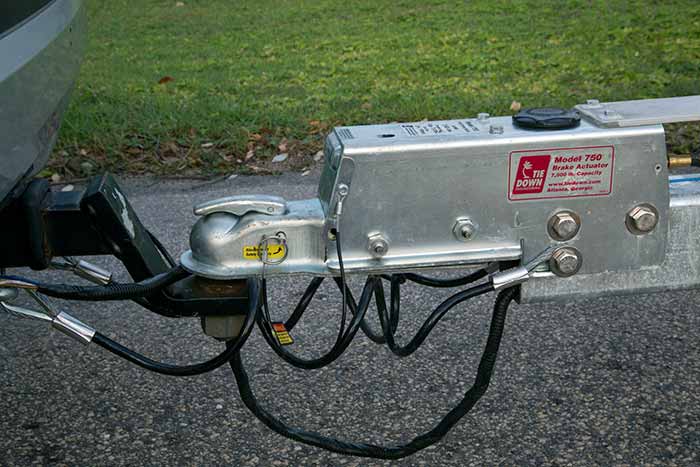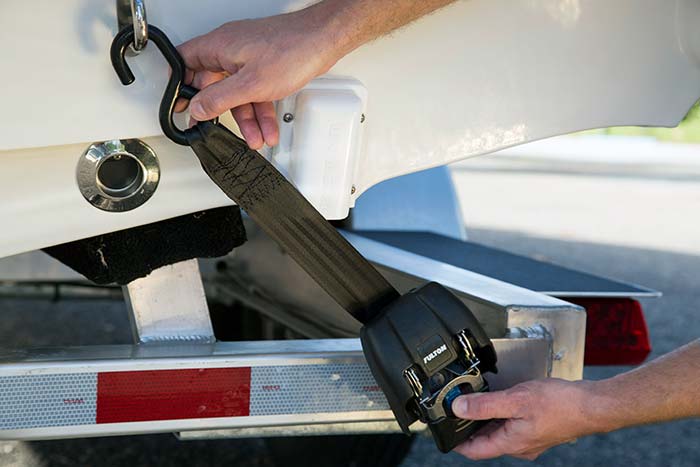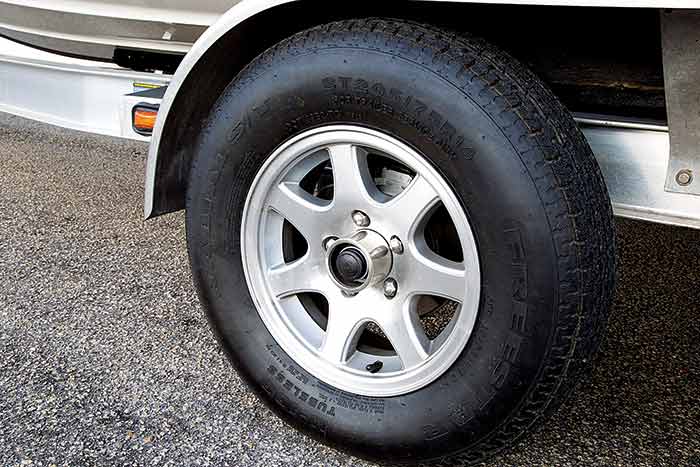Advertisement
A little planning before hauling your boat to faraway waters goes a long way.

Over the long haul, a successful long-distance boat-towing trip is a combination of pre-trip preparation and vigilance while the journey is underway.
Extended road trips with boat in tow make for memorable family vacations. Four decades of annual long-distance trailering trips have taught me that the best ones require pre-trip prep and common sense. The first step toward tow-trip success is using a vehicle that's up to the task of towing the designated boat and trailer rig, while comfortably accommodating passengers over the course of an extended journey. No matter how well-maintained the boat and trailer may be, if the vehicle used to tow it breaks down, you're dead in the water before you even get to the water. Be sure your vehicle is rated to tow the combined weight of the boat and trailer, taking into account the terrain and temperatures you expect to encounter enroute. An SUV that easily handles towing the family runabout across town in the Midwest flatlands may find its tow-rating envelope pushed when struggling on the uphill side of the Continental Divide or crossing the Mojave in the heat of July.

Make sure the ball and coupler are snug and that the latching mechanism locks.
Stowage Matters
You should know what your actual trailered weight is when the boat is packed for the long haul. If you're towing it with fuel and water tanks filled to capacity, and using the boat to transport coolers of food or beverages, fishing tackle and watersports gear, have it weighed as such. You may find that the trailer and/or the tow vehicle may not be rated to carry that additional weight. Instead, plan to top-off fuel and water tanks at your destination; ditto shopping for groceries. If you pack luggage and gear aboard the trailered boat, make sure it's protected from the elements and secure from shifting. Distribute the load so it's reasonably even on each side, and that more than half — but no more than 75 percent — of its weight is located forward of the axle to prevent fishtailing. Too much weight forward of the boat trailer's axle can affect steering and handling. Viewed from the side on level ground, the packed trailer, hitch, and vehicle should be on the same plane.

Transom straps reduce vertical and lateral movement and safely secure the boat to the trailer.
Trailer Concerns
Tandem trailers are a better choice for long-distance towing because they distribute weight better and offer a short-term backup, should a tire or bearing fail, by allowing you to limp a short distance on three wheels to where it can be serviced. The downside is their weight and limited close-quarters maneuverability. Single or tandem, make sure you have at least one spare tire mounted on the proper-size rim to fit the trailer, spare lug nuts, and a socket driver of the right size and strength to remove and replace them. The same goes for carrying extra sets of the proper-size bearings and seals. Consider taking a bottle or floor jack for the trailer so that you don't need to unpack your tow vehicle to get to the car jack if one is needed. Carry a can of quality inflatable tire sealant to temporarily fix slow leaks until you can get them repaired, and be sure to tell the tire-repair person that the highly flammable sealant has been used.
Tip
If your trailer is equipped with brakes, have them checked and serviced. Do the same with your tow vehicle; braking under load puts additional strain on braking systems. Have the vehicle's transmission and cooling systems checked and serviced as well.

When you stop to use the restroom, check how your tires are holding up. Every time.
Regular Checkups
Conduct a thorough check of the trailered rig far enough in advance of the trip so that broken, missing, or required items can be installed or repairs made. Prior to the trip and at regular intervals, such as every fuel stop or restroom break while on the road, Do another check of the trailer (see sidebar below).
Check And Double-Check ...
- Tow vehicle and trailer tires' condition and inflation levels
- Trailer tire hubs for lube levels and signs of bearing failure such as excessive heat
- Rollers and bunks for placement and condition to prevent scratching, gouging, and denting of the hull
- Tie-downs and engine supports for proper adjustment to prevent the boat from bouncing on the trailer. The bow eye on the boat should be secured with either a strap, chain, or turnbuckle in addition to the winch strap or cable.
- Make sure boat covers are tight, and fasteners secure.
- The coupler ball and coupler to make sure they're snug, that the latching mechanism locks, the nuts and washers are tight, and coupler chains or cables are secure.
- The trailer lighting system, to make sure lights are in working order. Carry spare fuses and bulbs or replacement LED lamps and consider carrying a set of portable trailer lights that can be secured to the boat or trailer and plugged into the tow vehicle if primary lights fail.
Pre-Haul Prep
Study the route you will drive and check the trailering regulations in states you'll pass through. Some have differing requirements for trailer brakes or maximum beam, which will have to be accommodated. You may need to apply for special wide-load permits ahead of time. Check your boat and vehicle's insurance policies and make sure you have coverage on the road and on the water at your destination.
Tip
Have the trip routed ahead of time (AAA Trip-Tiks are a popular choice) and request road construction updates along the suggested route. Always have up-to-date paper maps in addition to your vehicle's GPS routing system for double-checking the latter and for alternative routing information as needed. Consider monitoring a service such as Google Maps Traffic with a mobile device, offering real-time traffic info to complement your GPS.
Reserve overnight accommodations in advance, ask about lighted pull-through parking spaces for trailers, and allow extra driving time between stops. Make sure you have the phone numbers, websites, and confirmation numbers for the overnight hosts in case you need to cancel or rebook, and know the policies for doing so.

Check your rollers or bunks aren't digging into your gelcoat, and always attach a strap, chain, or turnbuckle to the bow eye.
When stopping for an overnight stay, park in a lighted area and consider backing the boat up to a wall or other feature that prevents the boat from being removed from the tow vehicle. Make sure your rig is parked in a position to pull out in the morning where other guests' vehicles can't block you in. Look over the boat to make sure covers are in place, no valuables appear vulnerable; and check all locks especially those securing the prop, lockers, console, cabin, or hitch. Then go get a good night's sleep, preferably in a room overlooking the lot where a quick glance out the window can assure you that your rig is safe, secure, and ready for the next day's haul.
